Kandy, Galle, Yala National Park, Whale Watching & Colombo: December 4 – 9, 2016
Day 4: Kandy
I was lifeless when the wake-up call ranged at 6:30am. I told Cat I would skip breakfast and stay in bed. She kindly boiled me some hot water which only came out half an hour later. I continued to vomit half a dozen times in the morning: I kept drinking so that I would not be dehydrated.
We drove a short distance to the Damabulla Cave Temple, also known as the Golden Temple of Dambulla, the largest and best-reserved cave temple complex in the country with a total of 153 Buddha statues, three statues of Sri Lanka kings and four statues of gods and goddesses. The murals cover an area of 2,100 m². The rock where the temple is located, towers 160m over the surrounding plains.
I managed to walk 15 minutes up a gentle slope to reach the main caves. In the first cave – “Cave of Divine King”, there is an account of the founding of the monastery with a 14m-long statue of Buddha hewn out of the rock.
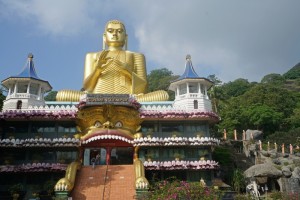 |
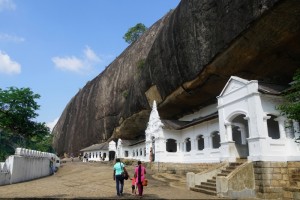 |
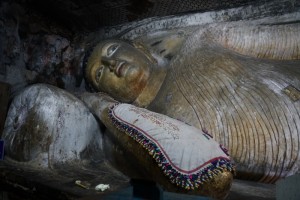 |
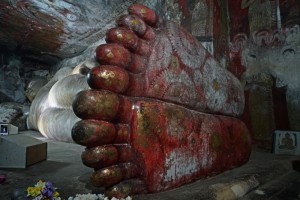 |
The second cave – “Cave of the Great Kings”, is the largest one with 16 standing and 40 seated Buddha. It also has the statues of Hindu gods of Vishu and Saman and statues of King Vattagamani Abhaya and King Nissanka Nalla. There is also a dagoba.
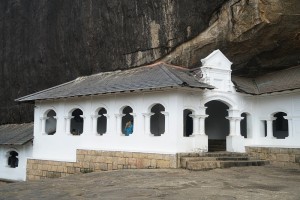 |
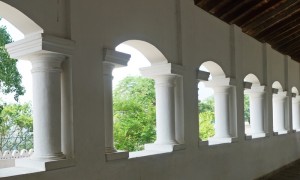 |
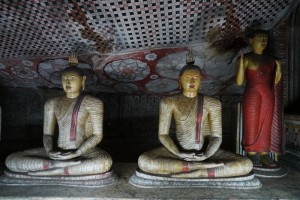 |
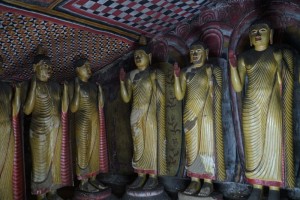 |
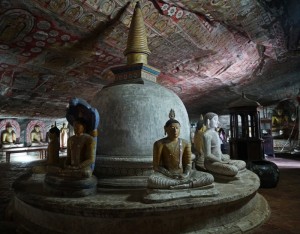 |
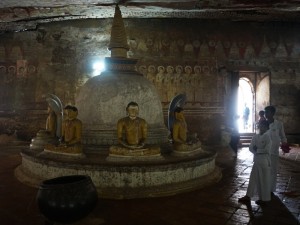 |
The third cave is called the “Great New Monastery” with ceiling and wall paintings in the typical Kandy style during the reign of King Kirti Sri Rajasinha (1747-1782).
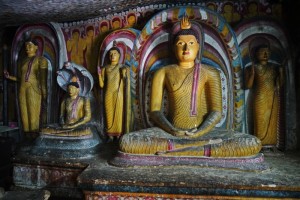 |
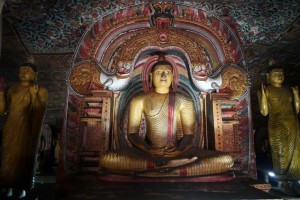 |
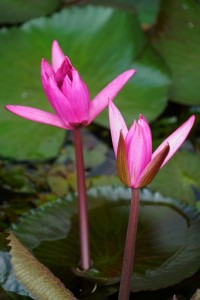 |
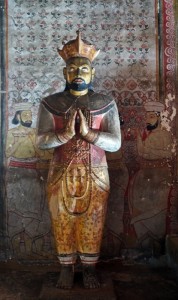 |
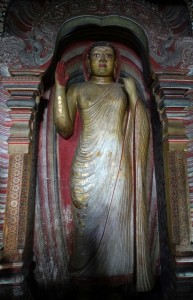 |
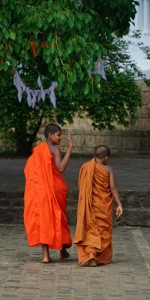 |
The caves are interesting and atmospheric. But there is simply too much to see and one needs time to soak in the atmosphere. Unfortunately, the air was stuffy and I felt sick. Once I came out of the caves, I vomited once more before boarding the coach. Luckily, I felt better afterward.
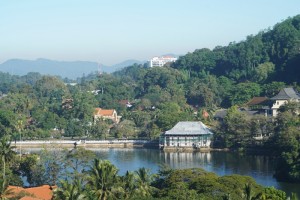 At lunch I managed to have soup without problem. We took over two hours to cover 70kms and arrived at the Temple of the Sacred Tooth Relic in Kandy around 4:30pm. The temple is located in the royal palace complex of the former kingdom of Kandy, the last capital of Sri Lankan kings.
At lunch I managed to have soup without problem. We took over two hours to cover 70kms and arrived at the Temple of the Sacred Tooth Relic in Kandy around 4:30pm. The temple is located in the royal palace complex of the former kingdom of Kandy, the last capital of Sri Lankan kings.
Origin of the Relic: After the parinirvana of Gautama Buddha, the tooth relic was preserved in Kalinga and was smuggled to the island by Princess Hemamali on instruction of her father king Guhasiva. They landed in Lankapattana during the reign of Sirimeghavanna of Anuradhapura (301-328) and handed over the relic. It was first enshrined in Meghagiri Vihara and moved to other tooth relic temples built by reigning monarchs close to their palace.
The relic was finally brought to Kandy where King Vimaladharmasuriya I (1590-1604) built a two-storey building to deposit it. The present temple building was built by Vira Narendra Sinha who reigned from 1707 to 1739 and a golden canopy was built in 1987 over the main shrine. The relic is encased in seven golden caskets in the shape of a stupa. During the annual Kandy Esala Perahera which is a grand festival started during the reign of King Rajasinghe (1747-1781), the relic is paraded through the city in order to give the public a chance to see and venerate the relic. The procession casket used during the festival is displayed in front of the main hall where Buddhists all over the world come to pay respect.
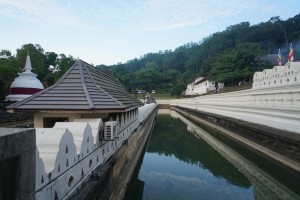 |
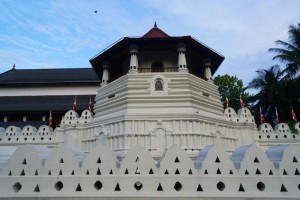 |
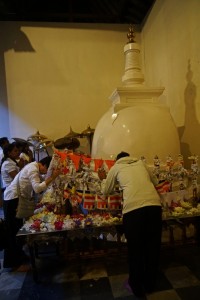 |
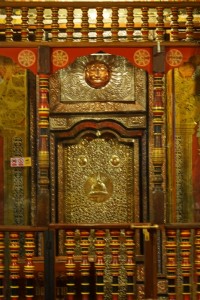 |
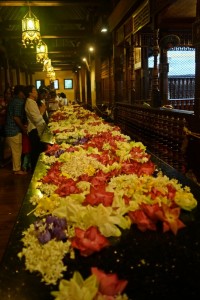 |
We were lucky to have a chance to visit the museum on Buddhism which outlines the development of the religion which has branched into two major streams namely Theravada which has been followed in Sri Lanka and Southeast Asia and Mahayana mainly in East Asia.
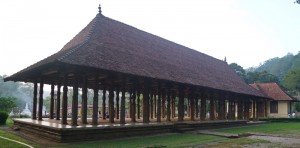 |
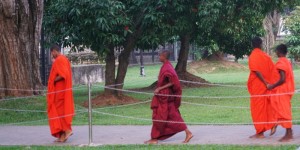 |
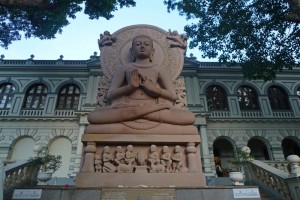 |
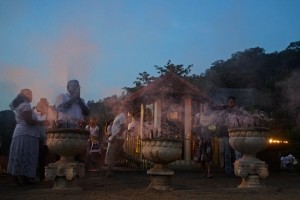 |
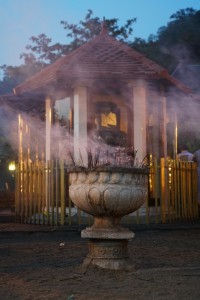 |
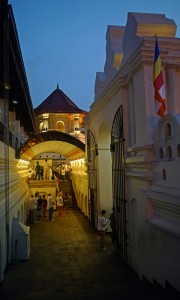 |
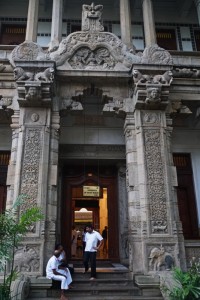 |
Our hotel, Ozo, located on the other side of the lake, is within walking distance. But as it was getting late, Rex decided to arrange minibus to take us to the hotel. We arrived at Ozo at 6:30pm and had dinner at 7pm. After a light dinner, I went to bed before 9pm as I badly needed a good sleep.
Day 5: Kandy – Colombo – End of Pilgrimage Tour
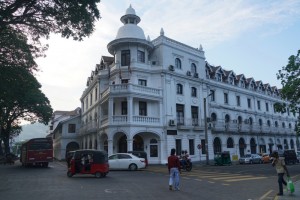 I had a sound sleep for seven hours and felt ready for a morning walk at 5am. I did not wake Cat up and slipped out stealthily. The air was cool and a stroll around the lake helped me to recover! I passed by the palace and watched locals going into the temple. The whole place looks serene and peaceful.
I had a sound sleep for seven hours and felt ready for a morning walk at 5am. I did not wake Cat up and slipped out stealthily. The air was cool and a stroll around the lake helped me to recover! I passed by the palace and watched locals going into the temple. The whole place looks serene and peaceful.
The main activity on the last day was to give alms to 15 monks in Kandy. As I had not attended the briefing in Hong Kong, I was not aware of the dress code for this special occasion. I borrowed a white T shirt from Cat and had cream-coloured (instead of white) pants on. We first picked up vegetarian food, fruits, dessert etc from a Chinese restaurant next to the temple.
Accompanied by four local musicians, we walked with the food in our hands to the temple. As we were early, we were taken to see the temple’s relic. The monks arrived around 11:30am. The most revered monk sat at the head of the table while the youngest monks in their teens sat at the end. The revered monk began with praying (of course, I had no idea what he was saying) before we served them three rounds of food. Before departing, he prayed again before blessing us by tying a white thread around our wrist. It’s the first time I attended such a ceremony.
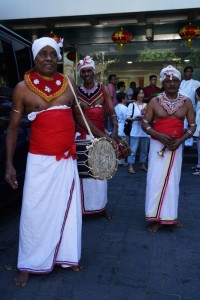 |
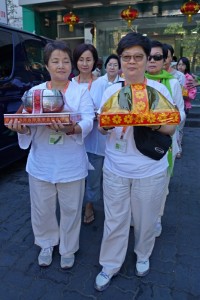 |
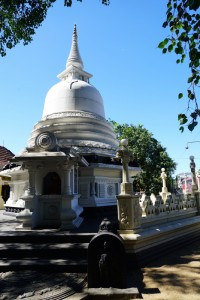 |
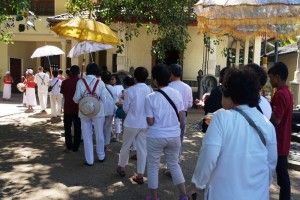 |
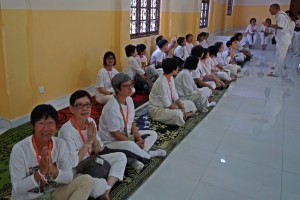 |
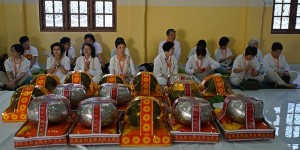 |
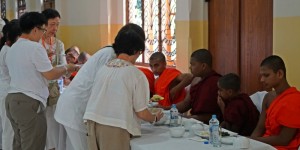 |
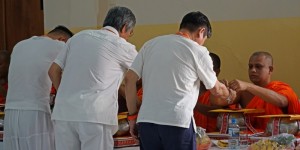 |
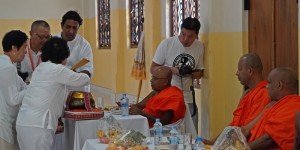 |
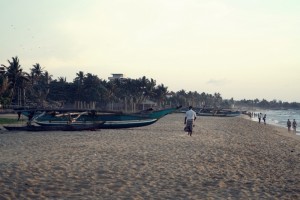 After lunch, we headed back to Colombo with a brief shopping stop in a cashew nuts shop. Rex told us their nuts are fresh, organic and of high quality. I bought a kilo. We were in Negombo, a prosperous Christian suburb north of Colombo, just in time to watch sunset by the beach.
After lunch, we headed back to Colombo with a brief shopping stop in a cashew nuts shop. Rex told us their nuts are fresh, organic and of high quality. I bought a kilo. We were in Negombo, a prosperous Christian suburb north of Colombo, just in time to watch sunset by the beach.
The group left for the airport after dinner at the Gateway Airport Garden Hotel while Cat and I headed to the Grand Oriental Hotel, once a mansion of a Dutch Governor and military barracks before turning into a hotel in 1875. Its heyday was during the colonial era when it was patronised by the rich and famous including HRM Queen Elisabeth. In 1954 the property was handed over the Bank of Ceylon. Today, it remains a quasi government owned property. It has a nostalgic feel: the staff in the restaurant still dress as a sailor.
We paid US$145 for a twin room with breakfast. But we could not belief when we walked into our room in the old wing: the room is small, the light is dim and the shower, towels and toilet look dirty. The beds are not comfortable and the bedding are worn with a dirty-look. No doubt, when Rex heard we would be staying there, he looked horrified!
**I later found out from the receptionist that our room might be sold around US$75 online without breakfast through booking.com or about US$90 through agents with breakfast. We had been ripped-off. For the same price or even less money, we could have stayed at 5-star hotels like Kingsbury, Hilton and Galle Face Hotel. As we had already paid for 2 nights, we had no choice but spent our last night in the same hotel**.
December 6-9: Galle & Colombo
Galle located on the southwestern tip 119km from the capital, has been a prominent seaport and entrepot for the spice as early as 1400 BC: Persians, Arabs, Greeks, Romans, Malays, Indians and Chinese were doing business here. Chinese admiral Zheng He was in Galle in 1409. The Portuguese arrived in 1502 and took control of the city till 1640 when the Portuguese surrendered to the Dutch East India Company. Galle is the best example of a fortified city built by the Portuguese in South and Southeast Asia reaching its height in the 18th century during the Dutch colonial period. The present fort built by the Dutch in 1663, is the largest remaining fortress in Asia built by European colonisers. When the British took the country from the Dutch in 1796, they preserved the Fort unchanged.
Today, Galle is a small lay-back photogenic and atmospheric fortified town with a strong Dutch and European feel. The town is filled with wooden traditional houses built in Dutch style, many of which have been turned into hotels, guesthouses, eateries and shops. Tourists and locals all enjoy walking around the Fort’s wall looking at the iconic light house. There are many interesting attractions including the Dutch Church, All Saints Church, Maritime Archeology Museum and Historical Mansion Museum. But the best way to enjoy the town is to stroll aimlessly soaking in the ambiance.
We arranged a private car to take us to Galle at 10am. On the way, we caught sight of the iconic and picturesque Simamalaka Shrine (part of the Gangaramaya Temple) built on a raised platform on the Beira Lake.
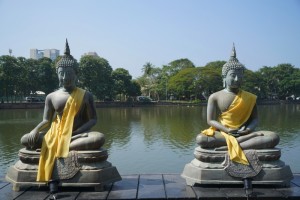 |
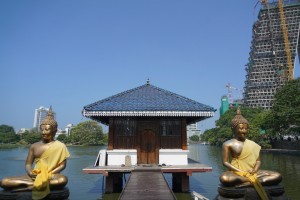 |
Our driver then dropped us off at the main temple complex which has an eclectic mix of buildings in Sri Lanka, Chinese, Thai and Indian architectural styles. We wandered through the sprawling complex looking at a few halls filled with hundreds Buddha statues in all sizes, some Hindu gods, countless stupas (resembling a mini Borobudur), a gigantic Bodhitree, the Vihara Mandiraya, an assembly hall for monks and the Relic Chamber.
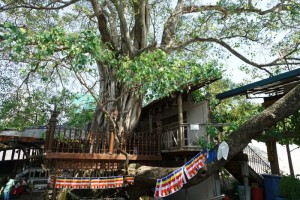 |
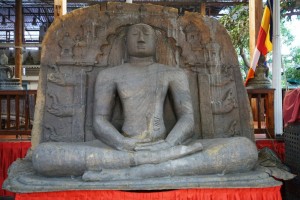 |
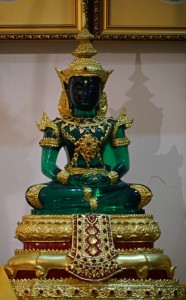 |
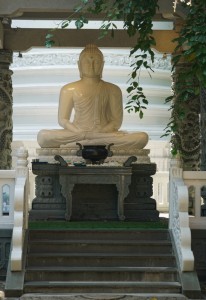 |
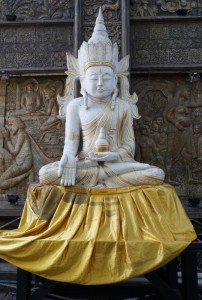 |
We left the temple around 11am. The traffic was very bad and we got stuck. As a result, we did not arrive in Galle till 2pm and had to pay more to the driver (Rs11,000). A normal transfer is around Rs8,000.
We stayed in a simple clean guesthouse run by a Muslim family. We paid less than US$50 for a twin room with air-conditioning. We ate in a restaurant in another small guesthouse nearby. The manager who looks honest and helpful, offered us a package comprising a safari trip, a whale watching cruise and a night’s accommodation in his guesthouse for US$256 for two of us. We took his offer. After a lunch-cum-dinner, we had a leisure stroll along the Fort’s wall and watched sunset. We had an early night as our safari trip would begin at 4:30am the next day!
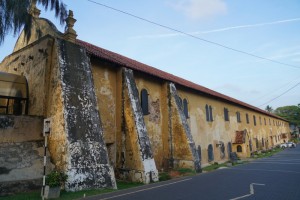 |
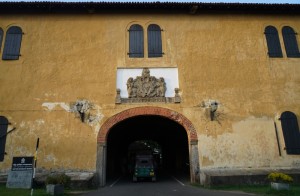 |
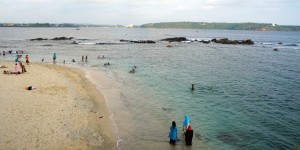 |
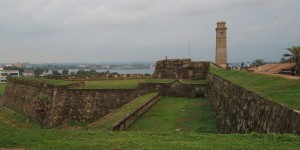 |
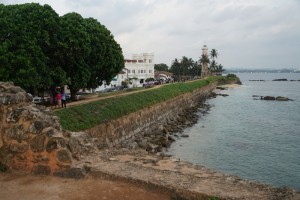 |
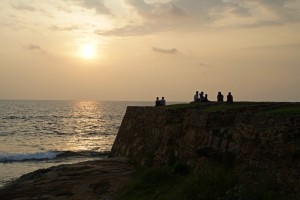 |
December 7: Yala National Park
Yala National Park with an area of 979 km² is the most visited and second largest national park in Sri Lanka. Consisting of five blocks with two blocks open to visitors, the park is important for the conservation of Sri Lanka elephants and leopards (44 mammals have been recorded) and aquatic birds.
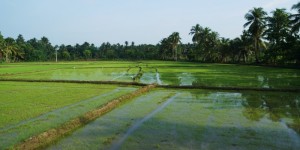 |
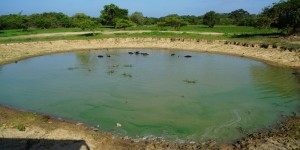 |
We left the guesthouse at 4:30am with our backpack and set off in a comfortable saloon car for the park. It took us almost two and a half hours to get there. Then we switched to another safari vehicle with open roof. We entered the park just before 8am and soon saw plenty of elephants, buffaloes, deers, wild pigs, peacocks and all sorts of birds. We joined a crowd of anxious visitors hoping to catch a glimpse of a leopard at one spot. After spending over 20 minutes looking at a bush from different spots, our driver finally gave up.
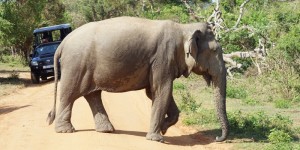 |
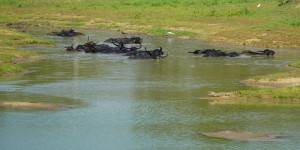 |
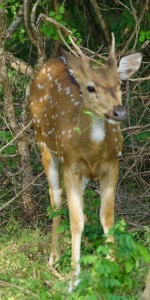 |
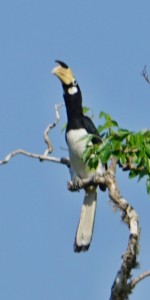 |
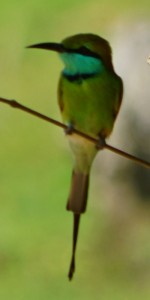 |
Our final stop was the Yala beach with a good view of the ocean and Patangala, an iconic rock outcrop at the end of a long sandy beach .
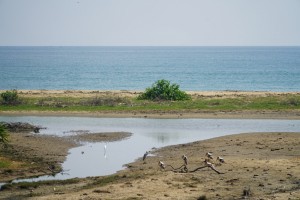 |
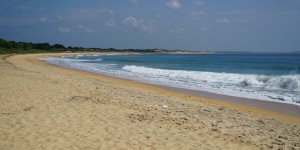 |
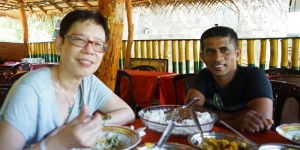 I saw two leopards in the Kruger Park, South Africa and in Botswana earlier this year and did not really expect to see one here (though the last count had shown 44 mammals in the park). I was not disappointed as I had a pleasant day with nice weather, pretty scenery and a nice driver.
I saw two leopards in the Kruger Park, South Africa and in Botswana earlier this year and did not really expect to see one here (though the last count had shown 44 mammals in the park). I was not disappointed as I had a pleasant day with nice weather, pretty scenery and a nice driver.
Our driver met up with us outside the park. Time for lunch as we had no breakfast. We asked him to take us to a local eatery. As a result we paid Rs600 for a simple lunch for three of us. We were back to the hotel before 4pm. It was hot and Cat did not want to go out after having a shower. I love old timber houses and enjoy visiting a number of local museums located in old houses. I had a quick look at the Dutch Church before it closed at 5pm. I returned to the Fort’s wall hoping to see a gorgeous sunset. I was disappointed again.
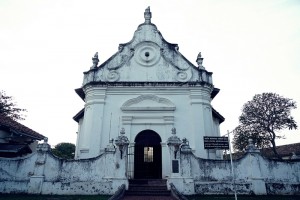 |
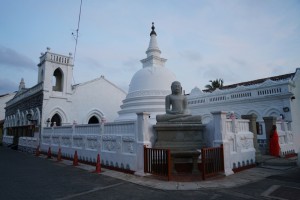 |
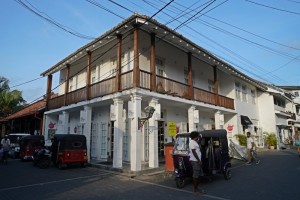 |
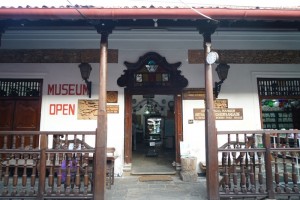 |
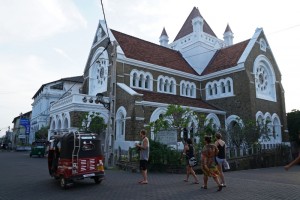 |
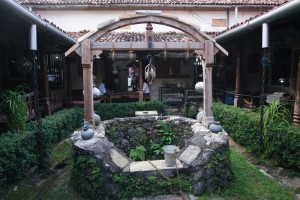 |
We had a simple dinner in the guesthouse and went to bed early. We had to leave for a whale watching cruise at 5:30am the next day.
December 8: Blue Whale Watching
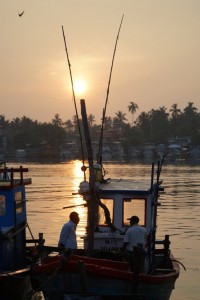 Sri Lanka boasts it is the only country in the world to see the world’s biggest land mammal, the elephant, and the largest marine mammal, the blue whale in a single day! Blue whales can be sighted around Dondra Point (accessible from Mirissa) and Trincomalee and the best time for whale watching in Mirissa is from November to April.
Sri Lanka boasts it is the only country in the world to see the world’s biggest land mammal, the elephant, and the largest marine mammal, the blue whale in a single day! Blue whales can be sighted around Dondra Point (accessible from Mirissa) and Trincomalee and the best time for whale watching in Mirissa is from November to April.
At 5:30am, we were picked up by a tuk-tuk, a common form of cheap transportation in congested cities in less developed and poor countries. We arrived at the Mirissa harbour an hour later. Mirissa is the largest fishing port in the area teeming with whale watching boats of all sizes along side the fishing vessels. We got on board a double-decked boat that was jammed packed in an orderly way: each passenger had to put on a life-jacket and took a seat. I guessed it must be carrying over 100 passengers. We were served a drink and a biscuit before the boat set off at 7am. The sea was calm and Cat who had taken a seasickness pill had no problem.
The area is known for dolphins. But our first unexpected guests were two mating turtles floating on the surface of the water. We watched them for over 15 minutes before moving on. Around 8:30am, I suddenly spotted something moving about 50m on the left side of the boat. Bingo! It turned out to be a pair of blue whales. It is difficult to take photos with many people in front of me. Anyway, it’s exciting to watch it arching through the water and disappearing within seconds. After a few minutes, they swam in front of our boat possibly less than 20m from us. I was thrilled to watch them gliding through the water on the right side of the boat. Soon they vanished in the deep blue sea.
We moved on but saw the same pair (according to the crew) at least three more times before heading back. But we saw no dolphin at all.
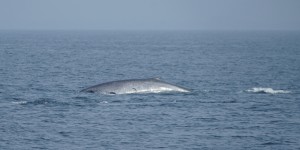 |
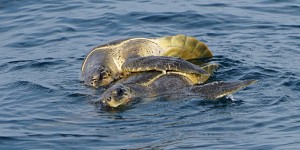 |
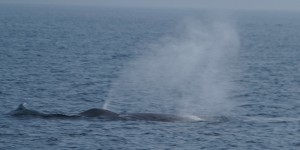 |
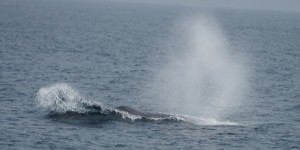 |
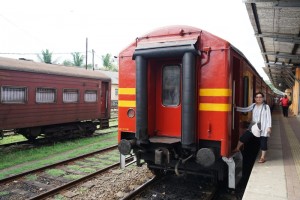 We were met by our tuk-tuk driver at 11am and we were back in Galle by noon. Our plan was to take the 2:45pm ordinary train to Colombo. We found a nice garden restaurant run by a British lady and had delicious noodles and rice in Thai style.
We were met by our tuk-tuk driver at 11am and we were back in Galle by noon. Our plan was to take the 2:45pm ordinary train to Colombo. We found a nice garden restaurant run by a British lady and had delicious noodles and rice in Thai style.
We had a nostalgic ride on a dated train without air conditioning. The fare is very low (Rs280). It’s slow, hot, stuffy and crowded with uncomfortable hard seats. The short journey takes two and a half hours. Perhaps we should have taken a bus with air-conditioning for more or less the same price. Anyway, it is an interesting experience: I travel with and like the locals!
At 5:20pm, our train pulled into the terminal which is not far from our hotel. Cat was tired and we decided to take a tuk-tuk. The first driver is greedy asking for Rs500. The second driver is honest asking for Rs200. As he is a nice guy, we asked him to take us around the next day (about Rs 500 an hour).
Back in the Grand Oriental Hotel, I told the receptionist about the money we had paid to the agent (US$145) and the poor conditions of the room we had on December 5. His manager listened to my comments sympathetically and offered to upgrade us to a suite. The renovated room is at least four times bigger than the standard room in the old wing with a nice and clean bathroom. The bed is enormous with clean bedding. Above all, we had BBC! Nonetheless, I still do not think it worths US$145 a night. I found out that a number of 5-star hotels in the vicinity with better facilities charged less for that date. I learn an important lesson: I must do my homework and cannot rely on travel agents to get me a good deal!
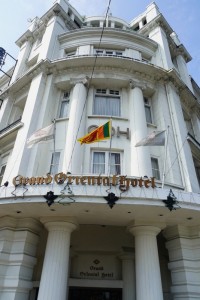 |
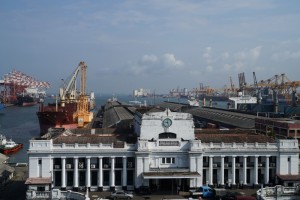 Grand Oriental Hotel (L), Port Authority and the Port (Above), Catherine and I in the hotel lobby (R)
|
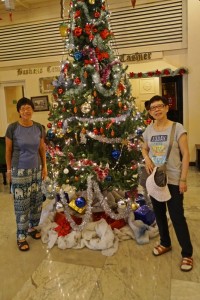 |
The hotel is surrounded by colossal old colonial buildings which are empty and dead at night. It’s so dark that we did not want to wander around. We ended up getting take-away in KFC close to the hotel and had chicken in our spacious hotel room with a cold beer. The KFC chicken tastes much better than I have thought.
December 9: Colombo
Colombo is the country’s capital as well as its principal commercial and financial city. It is a sprawling city with a large cluster of grand colonial buildings around the port and the Galle Face Hotel.
We had a pleasant tour of the city in a tuk-tuk for over three hours with several stops. The first stop was Hindu Temple of Sivasubramania Swami Kovil (I think) before arriving for a stroll in the Viharamahadevi Park opposite the Town Hall.
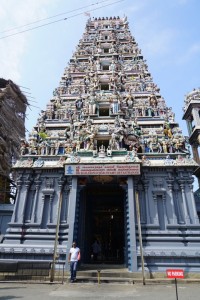 |
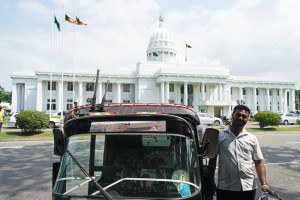 |
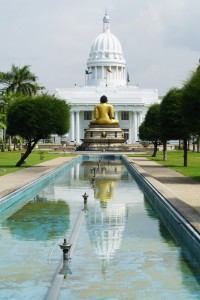 |
Independent Memorial Hall where we visited the museum (Rs300) which details the history of the country.
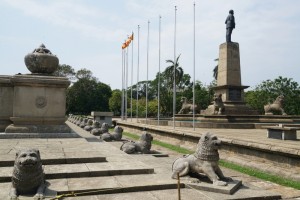 |
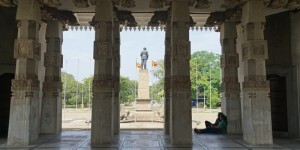 |
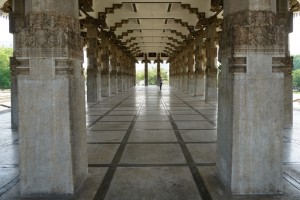 |
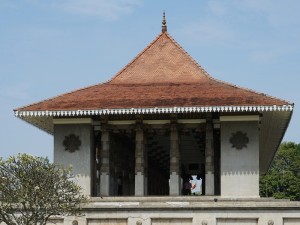 |
Galle Face Green. We walked along the beach and checked out the Galle Face Hotel which is grand and impressive with an excellent ocean view. We decided to have our dinner there.
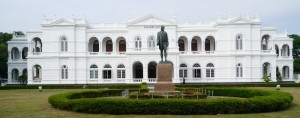 Around 12:30pm, we asked the driver to drop us off at the restored Dutch Hospital Shopping Precinct where we had lunch in the food court. We chose different dishes which are very reasonable and delicious. After lunch, we took another tuk-tuk to the National Museum of Colombo housed in an impressive white-washed colonial building. The entrance fee is Rs.600. In my view, some of the exhibits are fine but the displays can be arranged more systematically with better illustrations. The ventilation is poor. Hence we did not stay long.
Around 12:30pm, we asked the driver to drop us off at the restored Dutch Hospital Shopping Precinct where we had lunch in the food court. We chose different dishes which are very reasonable and delicious. After lunch, we took another tuk-tuk to the National Museum of Colombo housed in an impressive white-washed colonial building. The entrance fee is Rs.600. In my view, some of the exhibits are fine but the displays can be arranged more systematically with better illustrations. The ventilation is poor. Hence we did not stay long.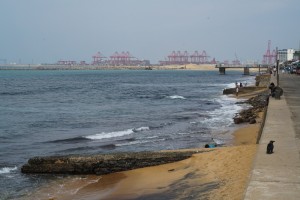
We went to the natural museum next door as our ticket covers both museums. I am disappointed by both the exhibits and their presentation which do not illustrate the diversity and richness of the country’s fauna and flora. We rushed out before we got suffocated!
Our flight would depart for Hong Kong after midnight. We had to hang around till 9pm when our driver would take us to the airport. As we were not keen for sight-seeing, we asked a tuk-tuk driver to drop us in a modern mall so that we could kill time.
We were back to the Galle Face Hotel before 5pm and spent the next three hours there. As the buffet dinner (Rs3,800 per head) would not start till 7:30pm, we decided to eat at the terrace seafood restaurant. We made the right decision: the seafood was excellent and fresh. We had seafood soup and grilled prawn as starter and a steamed fish with rice as the main course. We spent Rs6,000 on our best meal in Sri Lanka.
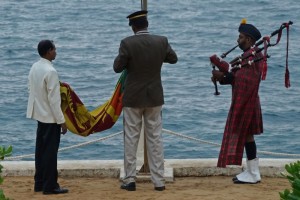 |
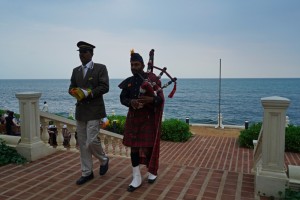 |
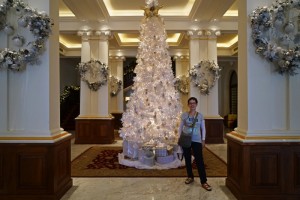 |
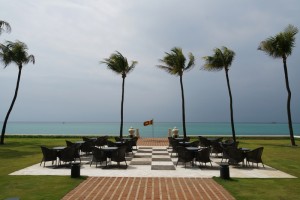 |
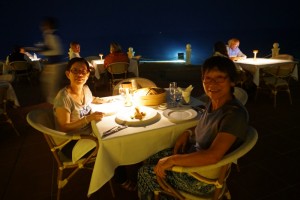 |
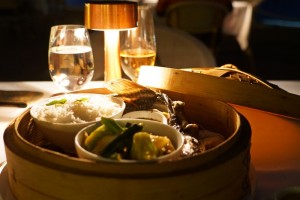 |
Our driver picked us up at the Grand Oriental Hotel at 9:30pm. The CX flight took off on schedule shortly after midnight and I was back in Hong Kong around 8am in good shape! By 9am, I was back in my sweet home after being away for three months.



